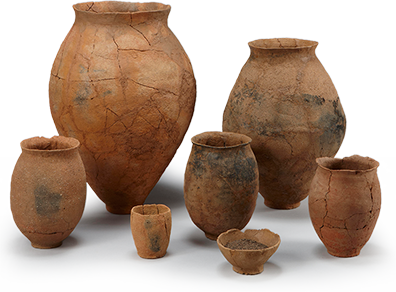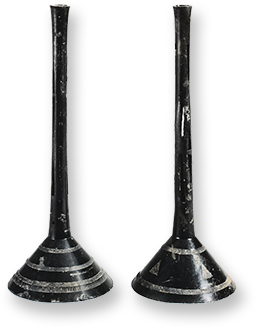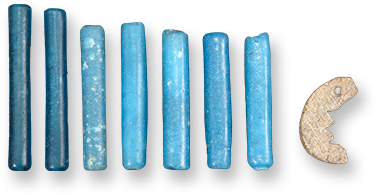Repository of the ancient culture of
Baekje centered around Buyeo
A section on Baekje culture associated with life and deathChapter 1 Life and Death explains they way of life at that time
based on the relics discovered at the historic sites in Songguk-ri and Majeon-ri,
which are highly representative of the mid-Bronze Age.
Egg-shaped plain earthenware artifacts characteristically display a small protruding mouth. The technology for making this kind of earthenware was also transmitted to Japan
View More
Chapter 2 Bronze Artifacts, Mankind’s First Metal Objects takes you back to the Bronze Age,
when people began to settle down in one place to cultivate rice.
These trumpet-shaped bronze artifacts consist of cylindrical columns placed on trumpet-shaped bases. Although their exact function is unknown, they are likely to have been used by a shaman.
View More
Chapter 3 Glass Tubular Jades introduces the way of life in Baekje
based on the characters inscribed on wood and stone artifacts unearthed in Buyeo.
The Baekje kingdom developed into a powerful nation by incorporating Mahan,
a confederacy composed of fifty-four small states.
These objects made of lead-barium glass were very popular in China. They have also been found in Japan, which suggests that there may have been cultural channels or routes that linked China with Korea and Japan.
View More
and the Baekje dynasty began to establish itself as a powerful kingdom while developing a highly refined iron culture.



